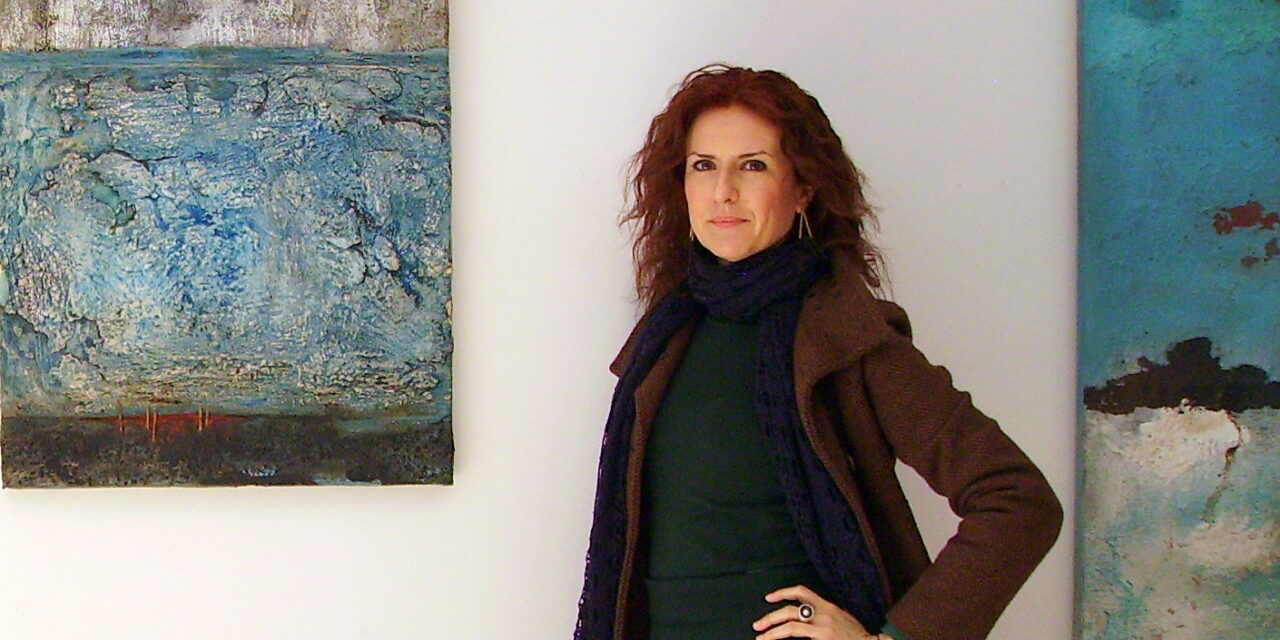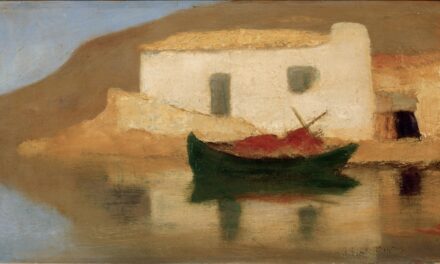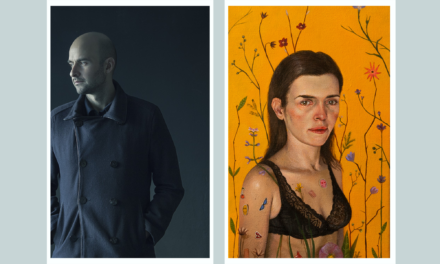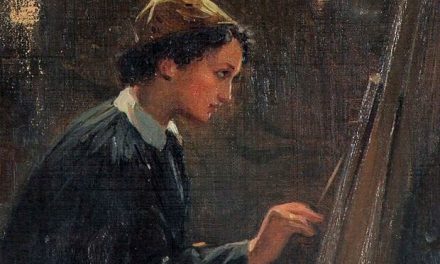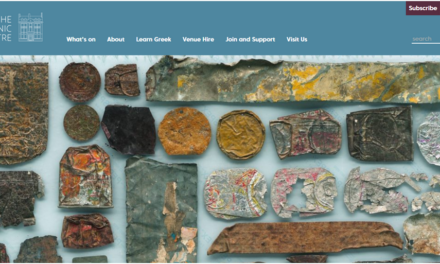Focusing on the triumph of life over decay, visual artist Maria Paschalidou presents her latest solo exhibition Spectral Attitudes at Atrolavos Art Gallery. Through a distinct blend of materials and techniques, her art explores the contrast between natural elements and human impact and encourages mindfulness about our relationship with the world. Her painstaking artistic process is as central to her work as the narratives it evokes, emphasizing each piece’s physicality and emotional resonance.
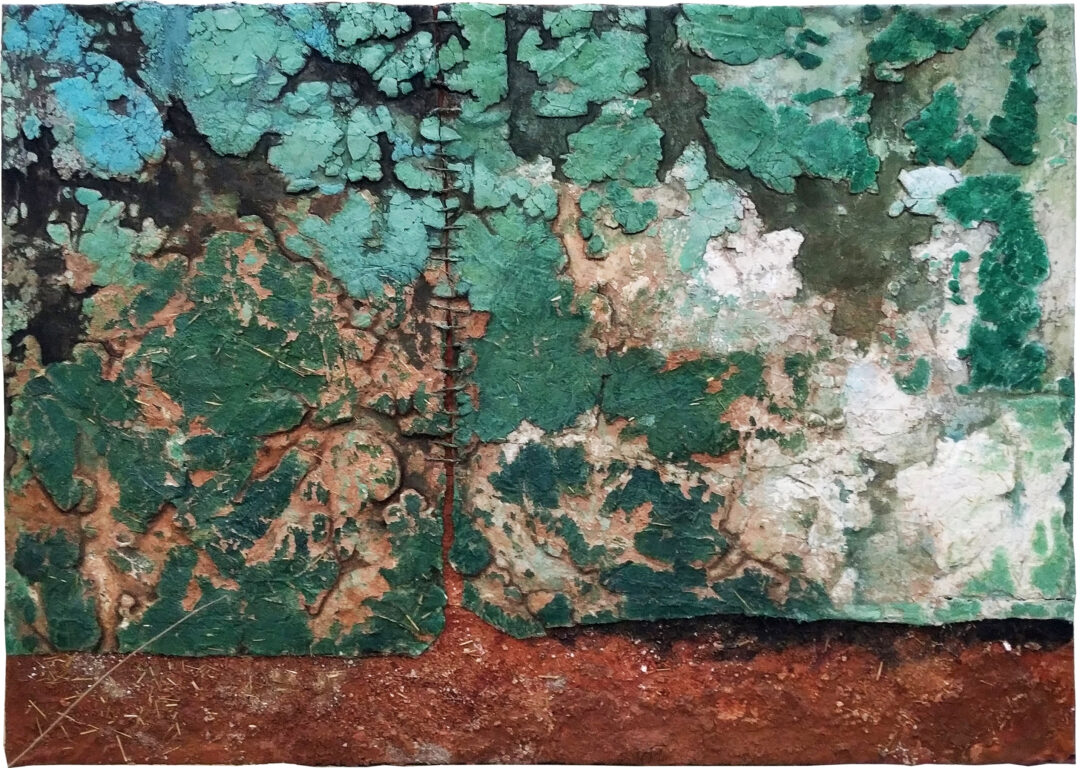
Her compositions, made of materials such as soil, stones, branches, coal, cement and plaster collected from dilapidated buildings, are processed in a way that gives them a new life. In that sense, her narrative represents the perpetual cycle of life, incorporating existential references. Her new body of work features sculptural compositions capturing the essence of the human condition and concepts of time, memory, decay, transformation, trauma and rebirth while seeking to draw connections between human experiences and nature. Working persistently, Maria Paschalidou highlights the dynamic aspect of things, their preservation, fragility and vulnerability.
Maria Paschalidou was born and lives in Thessaloniki. She graduated with honors from the Department of Visual and Applied Arts of the School of Fine Arts of the Aristotle University of Thessaloniki (2009). She has held five solo exhibitions and has participated in many group exhibitions in Athens, Thessaloniki and abroad. Her works are in private collections in Greece and abroad. She teaches visual arts in secondary education.
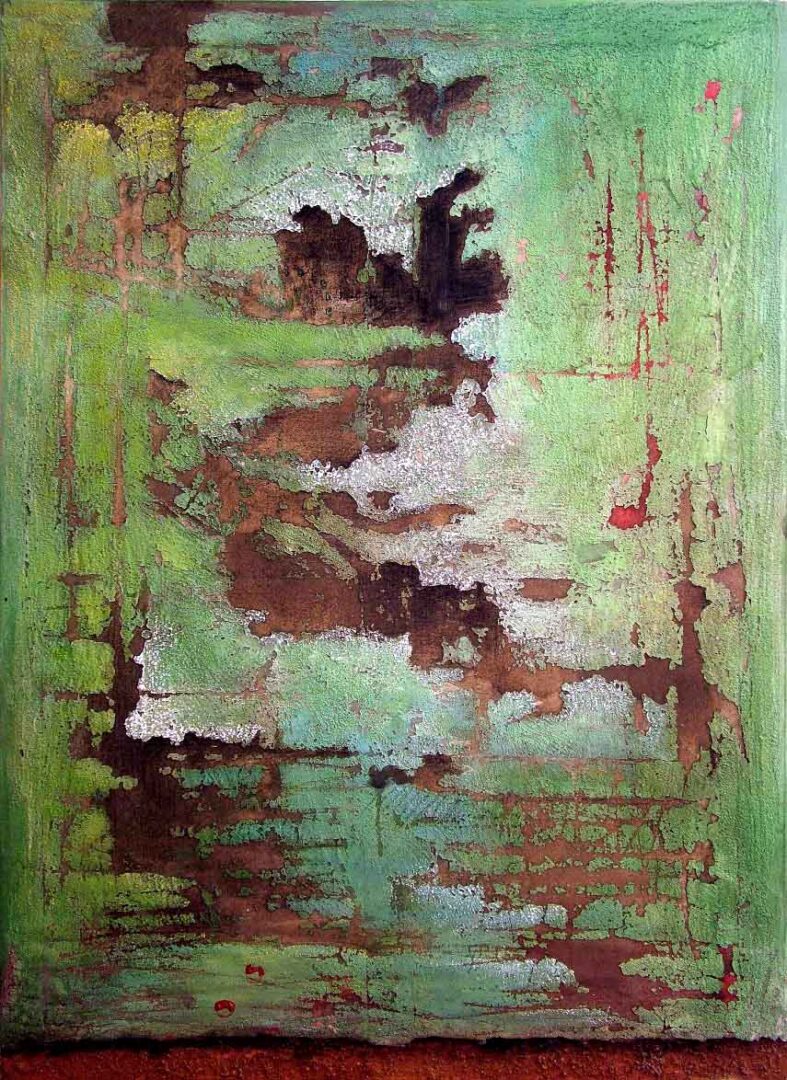
Maria Paschalidou shares her artistic views with Greek News Agenda*.
Your art combines materials you collect from abandoned houses, such as soil, stones, hay, branches, and plaster. Could you share with us the process of collecting your materials and how you process them?
My main source of inspiration is Ano Polis, Thessaloniki’s Old Town, where I live and work. This area is full of old and abandoned houses. That’s where I collect bricks, cement, plasters, and mortars. Materials left in oblivion that would end up in the trash. These materials become the raw material for my works. Then I bring them to my studio where I crush them, mix them with special glues and transfer them to my canvas, where I create almost sculptural compositions. Depending on the composition, I use acrylic paint.
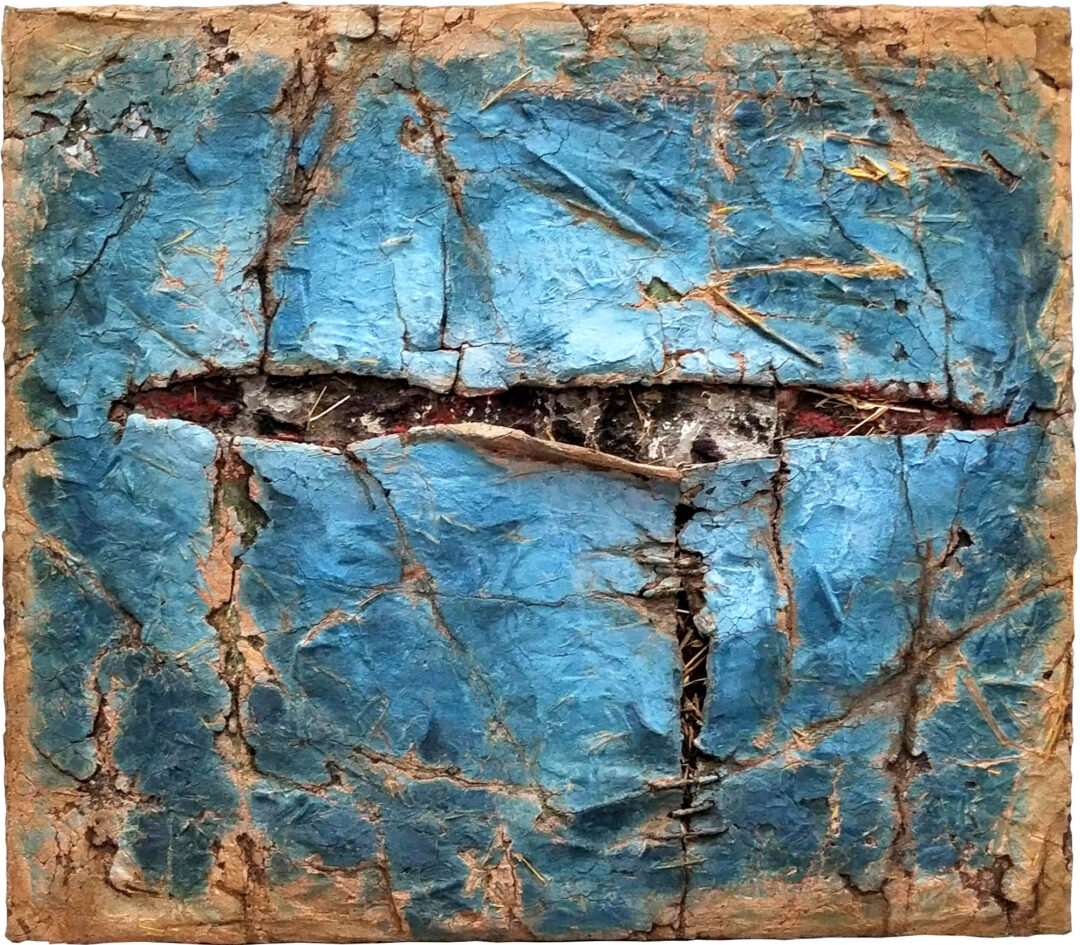
What is the role of time and decay in your works?
My works are testimonies to the traces that time leaves in space and matter and evidence of the wear and tear that everything is subject to. Time and the marks it leaves behind are the subject of my work. This natural wear and tear is everywhere around me and it fascinates me. I use old materials that we pass by every day and are considered useless. I collect them in my studio and try, through artistic intervention, to prevent their natural disintegration and in my way to save them. It is an act of resistance to decay and a return to a state of integrity. My works carry memories, they are bearers of history, and they contain a lived past, to which I want to give a future.
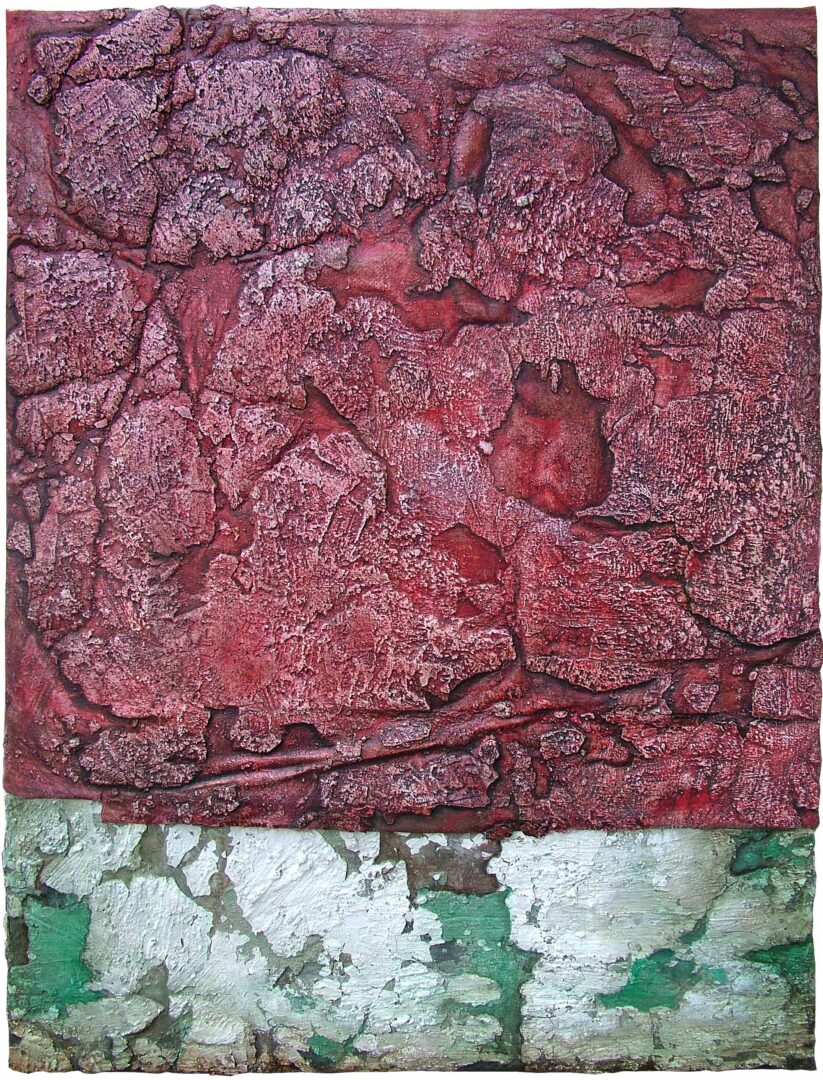
The titles of your works come from poems by André Breton. How did this choice come about?
This choice came about by chance. While I was working on my works, I happened to be reading André Breton’s poetry. Within his work, I gradually began to find expressions, sentences, and words that somehow seemed to fit with the paintings I was making, such as “Fallacy of Time,” “Shades of Humidity,” “Possibility of Life,” “The Mechanism of the Will,” etc. That’s how I also drew inspiration for my current exhibition, “Spectral Attitudes.”
Which visual artists and artistic movements influenced you as an artist?
I started using and experimenting with materials when I saw the work of Anselm Kiefer in London, where I lived for a while. I was a student at the School of Art and his work was a revelation to me. I returned to Greece and started experimenting with cement, clay etc. Jannis Kounellis, Mark Rothko, Alberto Burri, Rena Papaspyrou, Stathis Logothetis and Nikos Kessanlis are also artists that have strongly influenced me.
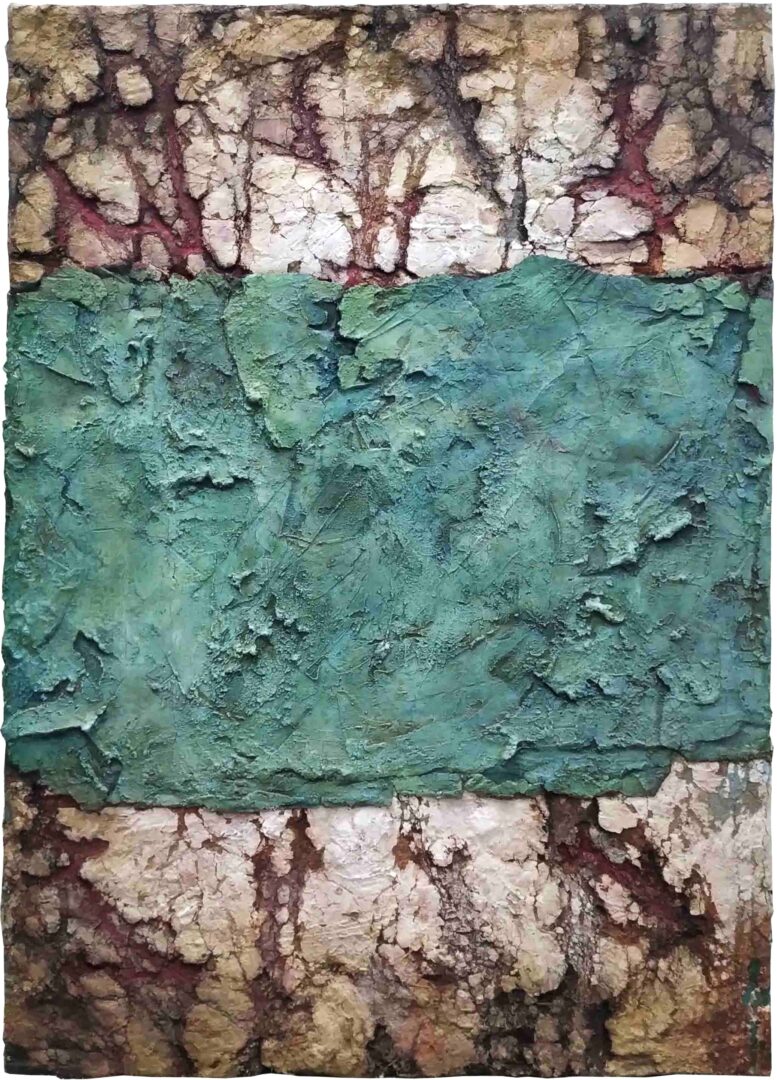
Although you focus on the matter, I would assume that a human dimension is also present in your works, albeit implicitly.
I mainly use materials from ruined houses in which people once lived. Researching the history of each house and the people who inhabited is part of my creative process. Let me give you an example. A few years ago, I used materials from a house that was demolished in 2012. This house was of particular architectural interest and had been classified as a work of art that required special state protection. I researched and found the history of this house. It was built in the late 19th century and was inhabited by Turks. In 1922, after the Greco-Turkish War, they were forced to abandon it and in 1929 it was bought by Emmanuel Papadopoulos, a wealthy merchant from Constantinople, in which he lived with his wife and children. After research, I found his last living daughter, grandchildren and great-grandchildren.
*Interview by Dora Trogadi
TAGS: ARTS

